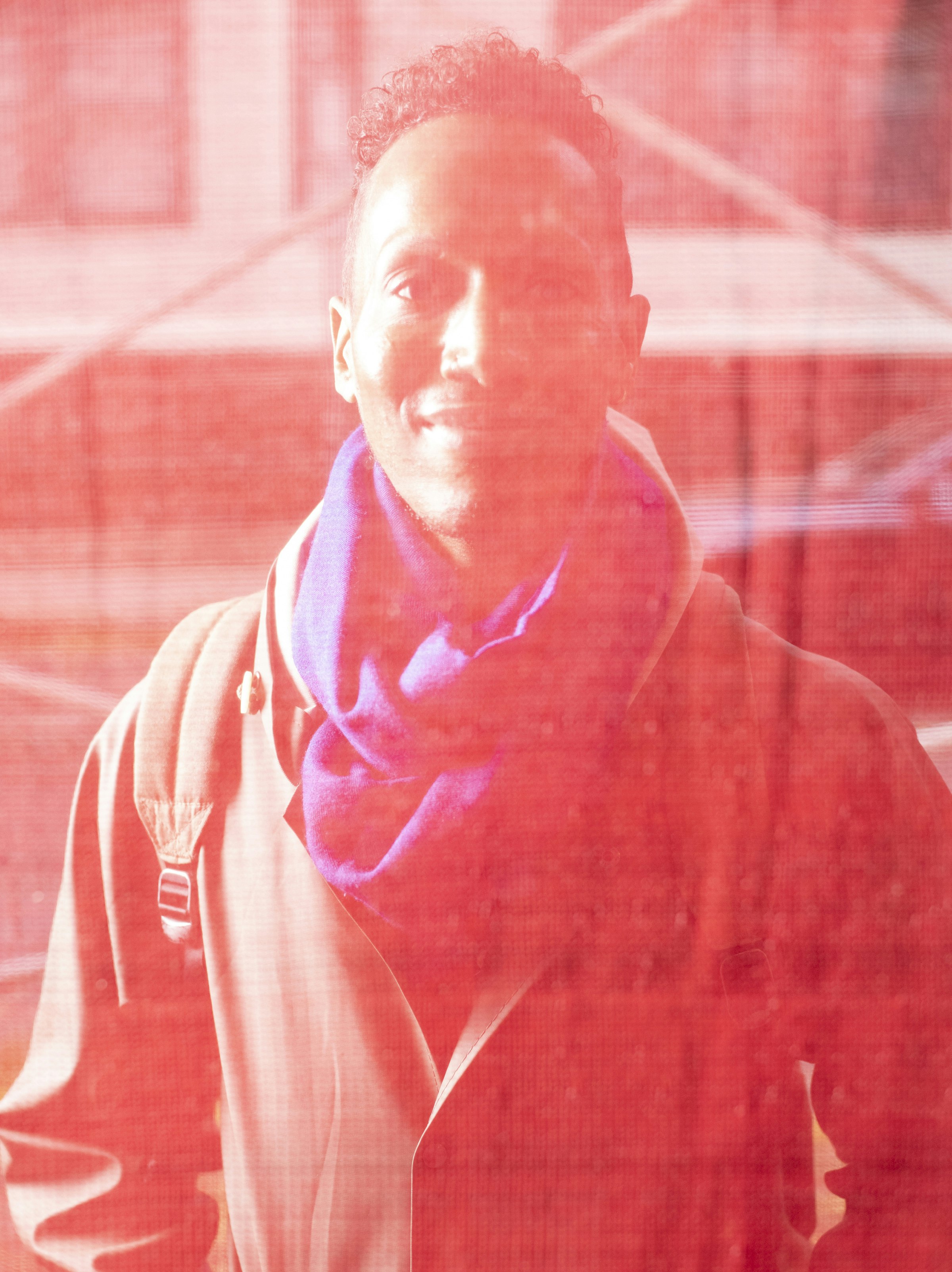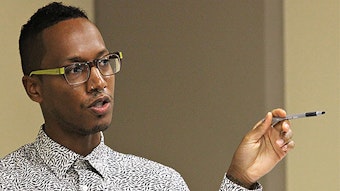Friendship-Fueled Art

Uri McMillan shines a spotlight on lesser-known influencers of the 1970s New York downtown scene.
Dancers and designers, musicians and models—everyone met at Studio 54 and numerous other nightspots in New York City, Paris, and Tokyo in the 1970s at the cusp of the ’80s. If the 1960s was a decade of revolution and change, the ’70s reaped the benefits as a period of creative foment, when barriers between artistic disciplines—and between high and low art—fell away. But even as films, books, and the popular imagination continue to celebrate pathbreakers from Andy Warhol to Halston, the performance historian and 2021–2022 Walter Jackson Bate Fellow Uri McMillan is looking beyond the era’s predominately white stars to recognize LGBTQ creators and artists of color—figures like the musician/model Grace Jones, the illustrator/photographer Antonio Lopez, and the fashion designer Stephen Burrows—who not only matched their better-known colleagues for artistic invention but made friendship a form of art itself.
At the heart of McMillan’s project “Airbrush, Instamatics, and Funk: Art, Pop, and New York City’s Long 1970s” is a desire to correct what’s perceived as the “official” history of that era. Much like his first book, Embedded Avatars: Genealogies of Black Feminist Art and Performance (NYU Press, 2015)—a study of black women’s performance art that focused on artists reclaiming and redefining the roles their bodies and image play in art—this new book-length project “puts those people who are in a background in the foreground,” said McMillan. “That's actually the way we should be telling the history.”
McMillan, an associate professor in the Departments of African American Studies, of English, and of Gender Studies, reinterprets the history of this time through the stories of Jones, Lopez, and Burrows. All members of the African diaspora—Jones immigrated from Jamaica, Lopez identified as Nuyorican, and Burrows had Trinidadian ancestry—they have been largely sidelined despite indisputable and lasting contributions to culture.

Antonio Lopez and Grace Jones, seen here in one of Lopez's SX-70 Polaroids, were brought together by the vibrant nightclub scene in which they both participated. Courtesy of The Antonio Archives
Jones, who first broke onto the scene as a strong, nearly androgynous model before turning toward acting—including a turn as a Bond girl in A View to a Kill—and music, served as a muse to her friends and fellow artists. Lopez, an accomplished fashion illustrator whose sexy “Antonio girls” graced everything from Women’s Wear Daily to French Vogue, chronicled their shared scene with a Kodak Instamatic camera, creating iconic, informal “instant” photo series that captured the heady mix of celebrities, musicians, and models in their element. Burrows, meanwhile, was one of the five American fashion designers who faced off against the iconic French designers Marc Bohan, Pierre Cardin, Hubert de Givenchy, Yves Saint Laurent, and Emanuel Ungaro in the 1973 “Battle of Versailles” fashion show in Paris. His signature strong colors and curly “lettuce hem” edges played a central role in the runway show, which is credited with putting American fashion on the international map.
The role of this influential designer—who has not received the attention of his compatriots on the delegation, Bill Blass, Halston, Anne Klein, and Oscar de la Renta—came into focus during McMillan’s time at Radcliffe. The humanist critic and historian was accessing the online archives of Vogue magazine and also reading the memoir of Pat Cleveland, an African American model of the period, when he was struck by “a strange confluence of events” that brought Burrows to the fore. The designer was already going to be a figure in the book, he explains, appearing in a chapter on Lopez and the Studio 54 scene. But the more McMillan researched, the more he started seeing additional interactions: “Jones wore Burrows’s clothes. Lopez has a drawing of Burrows.”
What united them all was the nightlife of the era. “Burrows became a fashion designer in part because he was a dancer,” explains McMillan. “He was really interested in thinking about how fabric moves against a female body.”

This spread from the September 1977 issue of Vogue showcases eight of Burrows’s designs. His friend and muse, Pat Cleveland, can be seen second from right, in the gold tissue mesh dress. Photo by Oliviero Toscani, via The Vogue Archive
These three each exerted “a centrifugal force around which a lot of people orbited,” said McMillan. But although each had a personal scene, “they all were in very similar spaces at the same time,” from the pages of Vogue to dance clubs like New York City’s Danceteria and the Paradise Garage.
“What was unique about downtown cultures in that period was this confluence where fashion designers, graphic designers, models, musicians, performance artists, clothing designers, all are comingling and interacting together,” said McMillan. He describes a scene that was much larger, and more diverse, than Warhol’s better-known enclave. “They were part of a really vibrant community, but people don’t see it as being as important as Andy Warhol’s Factory.” What drew this larger scene together? “The vibrant nightlife that they’re all part of.”
That nightlife—and that dynamic scene—lasted into the ’80s, hence McMillan’s definition of the “long” ’70s. Although the AIDS crisis ended the era tragically, taking the lives of many of its artists, including Lopez, the impact of that time—and that scene— lives on. “I think it gave a sense of possibility about creating a different type of world to inhabit,” says McMillan. “Different ideas of what artistic production could look like.”
While these three artists and their colleagues crossed boundaries and bent rules, it was their interactions that most captivated McMillan. “A lot of this work is about thinking about friendship as an art form in itself,” he says. “The logic of the book really did come from the way that people talk about their friendships, but also the way that those friendships were forms of mentorship.”
On and off the dance floor, people were inspiring one another, teaching each other, and sharing ideas. “Creativity was the thing that people really were going after,” said McMillan. “It was very common for people to meet each other at a nightclub and decide, ‘Okay, let’s collaborate and just see what it looks like.’”
Artists like Jones, Lopez, and Burrows found varying levels of fame. But ultimately, says McMillan, “They really were doing it for themselves and seeing themselves as both the producers and the audience.”
Clea Simon ’83 is a novelist whose most recent title is Hold Me Down.








